Interactive Read Aloud
Program Transcript
Davis: Bippity boppity bumble bee, can you say your name for me?
Student: Uh, Gaelo.
Davis: Gaelo. Let's clap it. Gaelo. Let's snap it. Gaelo. Let's stomp it. Gaelo.
Davis (Interview): I teach at First Place to Start Childcare Center, and we have ages four and five year olds. In our read aloud today we the story Joseph had a little overcoat. We chose that book because it added to our clothing theme, but it also expanded their vocabulary on different kinds of clothing.
Davis: Who is this? Remember? Who is that? Remember his name? Starts with a J. Jo…
Students: Joseph.
Davis: All right. And he has a bunch of friends on there. Who are his friends?
Student: All of the animals.
Davis: All the animals are on there.
Student: That's a chicken.
Davis: A chicken. What's that one?
Students: A cow.
Davis: A cow. And look, all of his friends here. What are they doing?
Student: He's singing.
Davis: Singing. Exactly. He's singing. So Joseph had a little overcoat. It was old and…
Students: Worn.
Davis: Worn. And what was worn? What did we say, talk about worn?
Student: It means it's getting old.
Davis: It's getting old…
Davis (Interview): So we chose that book because they were able to repeat parts of the story over and over again, and they were able to use that repetition to expand their vocabulary.
Davis: Joseph had a little necktie. It got..
All: Old and worn.
Davis: And then Joseph had a little button. One day…
Student: He lost it.
Davis: He lost it. Yes, Hellah.
Student: Uh, and then he made a story of it.
Davis: You remember so well. And what is he doing?
Students: Looking for it.
Davis: He's looking for it. And, wow. Is he looking very, very hard for that, 'cause he's done what?
Student: And he's moving the stuff away. And there's a hole on his wall.
Davis: A hole?
Student: It's right there on his wall.
Davis: Come show me.
Davis (Interview): When we're reading stories to them they're able to be a bit more creative, so it's, it's something that comes from reading aloud, because he comprehended, he understood the story, but he was able to take it a step further.
Davis: Okay. I like that story too. And you know what? I brought some coats, and so we can see what the vest look like and what the overcoat looks like. Who wants to try on the overcoat that Joseph had?
Students: Me!
Davis: Okay. How about Gracia?
Davis (Interview): We gave them a chance to act out the story, so each child was able to put on one of those types of clothing, so they were able to gain a lot more comprehension.
Davis: I need, uh, Jaden, you come and hold the book, and we'll go back to the pages and see. Thank you, Jaden.
Davis (Interview): We did have one little boy that we had to sit and turn the pages, which is also very important to children in reading aloud.
Davis: After he had the jacket, then it became a what?
Students: A vest.
Davis: A vest. So after it was a jacket, it became a vest. What's missing off of the vest that was on the jacket? What are these things here?
Student: Sleeves.
Davis: Sleeves. So, who knows what it's going to become next?
Student: Me!
Davis: What?
Student: A scarf.
Davis: A scarf. Let's turn the page and let's see. There it is. What is it?
Students: A scarf.
Davis: A scarf.
Davis (Interview): Allowing the children to become a part of the story helps them to understand, and that's what reading aloud is all about.
Davis: …jacket. And then it becomes a vest, and then a scarf, and then a tie, and then a handkerchief, and then a…
Student: Button.
Davis: Button. Yay!
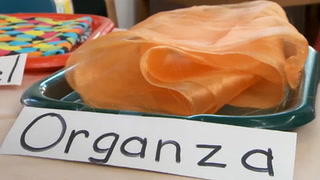
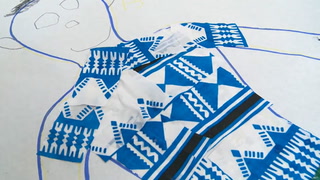
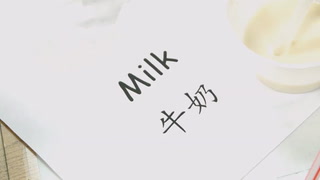

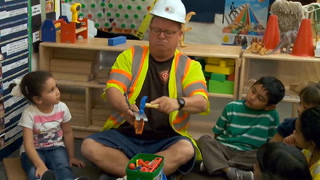

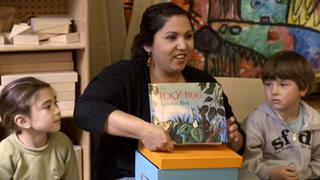

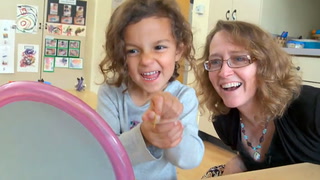
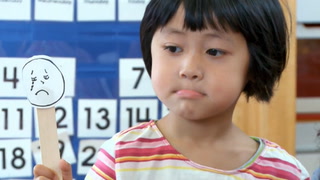









71 Comments
Lauren Pierce Jan 15, 2024 11:54am
When read alouds are interactive, it aides in students comprehension and also their attention or focus to the lesson. They are able to use repetition to expand their vocabulary. The teacher was able to keep students attention, make the lesson fun and monitor or check for understanding.
LaBresha Small Dec 26, 2023 10:58pm
SHONDRICA LEE Aug 30, 2023 3:40pm
The children were allowed to become the story which helped them to comprehend the story.
Joann Miller Jun 8, 2023 1:42pm
I loved the use of props, it helped students comprehend the story. They were able to recall and visualize what was happening in the book by recreatinng the story using props. Book had briight and colorful pictures to keep they attention,
Christian Collard Sep 27, 2022 11:31am
By connecting prior knoweledge from syllabication to rhyming all the way to recall. This lesson has several peices of support for reading comprehension. Reading can become repetative or boring to many students, but if we make it interactive and engaging then students want to read and want to learn how to become better readers. This si the importants of having interactive read alouds so that students can express their creativityand hands on all while growing that comprehension piece. The teacher uses directionality and repetition to help with the concepts of print. She uses pointing to the words to help with directionality and then by sounding out or using her reading strategies to help comprehend the reading along with repetition which strengthens the vocabulary throughout the reading.